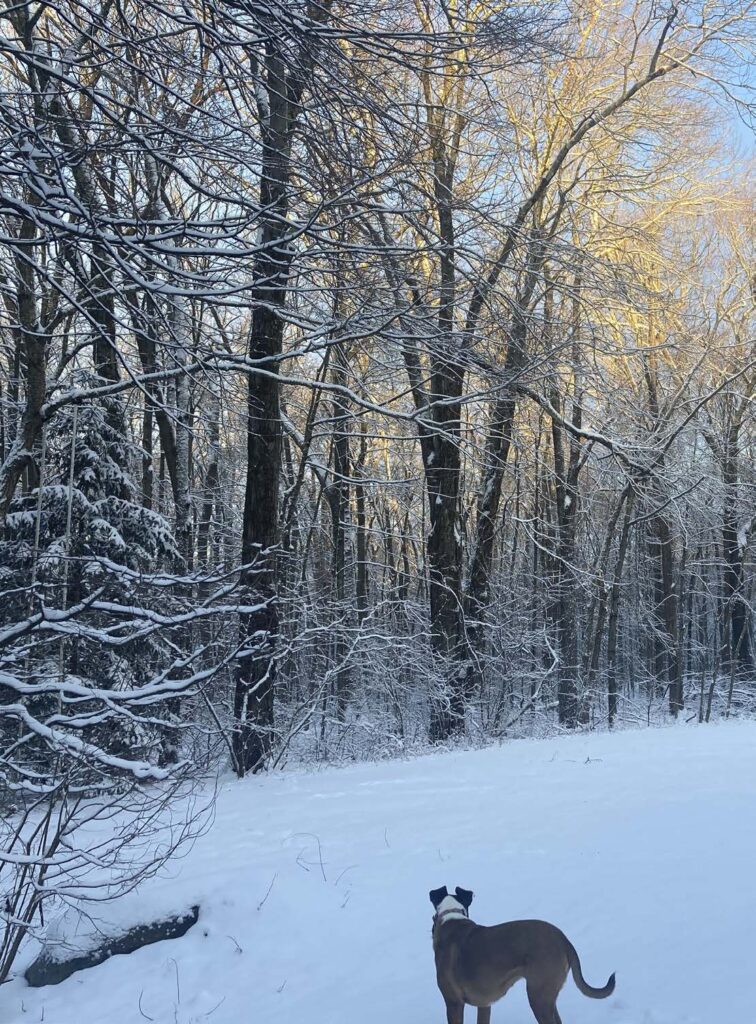
Today, we are witnessing an accelerated climate crisis — extreme and irregular weather, flooding, droughts, wildfires, decreased air quality, often disproportionately harming the most vulnerable communities — which is directly related to the high levels of carbon dioxide we have pumped into the atmosphere. The crisis is making more people ask, “What can I do to make a difference?”
As it turns out, you can start in your backyard.
A new Arnoldia magazine article from Highstead Senior Ecologist Ed Faison details his approach as a residential property owner in implementing stewardship practices that support carbon emission reduction and increase carbon dioxide removal and storage (carbon sequestration). From small lots to large forests, private forest owners own 85% of New England’s forests. Faison presents his residential Connecticut 1.5 acre lot as a case study demonstrating just how trees — even on smaller lots — can factor into significant carbon sequestration.
Considering tree growth is the default vegetation in the Northeastern landscape, property owners have options for managing their vegetation and its potential for carbon storage, all of which balance benefits and drawbacks for human and nonhuman occupants. A healthy mix of management decisions for Faison’s existing forest optimize the ecological benefits of standing trees and deadwood and supports the intricacies of relationships between woodland flora and fauna. Faison details the advantages of reforesting an existing lawn portion, resulting in an estimated twenty-five times more carbon stored than the grass it replaced could store.
On the side of the built environment, tree cover offers additional carbon saving benefits to Faison’s residence. Trees, standing within sixty feet of his house, provide summer cooling and winter insulation, resulting in decreased energy expenditure and reduced carbon emissions.
Finally, while limited in some residential circumstances, the article demonstrates how even small-scale wildlands management offers more climate benefits while doing less — by not removing trees or vegetation at all. Some property owners may consider the particular aesthetic and climate services that accrue from leaving more vegetation intact vs. maintaining a large mown lawn.
More than this, landowners’ voluntary conservation actions (i.e., formally protecting their land with a conservation easement), even on a small scale, expand the total amount of forestland conserved throughout New England and serve as a critical solution for climate change, as outlined in the Wildlands and Woodlands Vision.
Discover the intricacies and collective power of ‘Backyard Climate Solutions’ by Ed Faison in Arnoldia Volume 8, Issue 3.